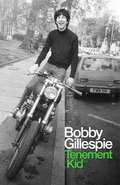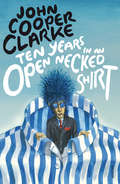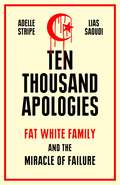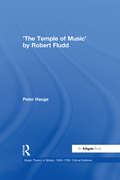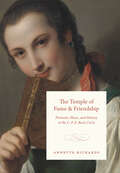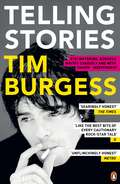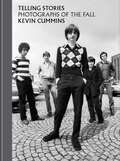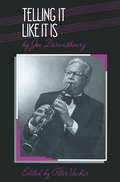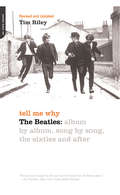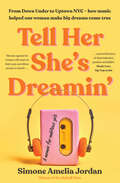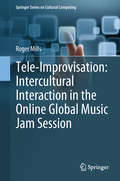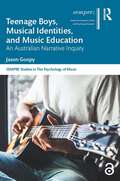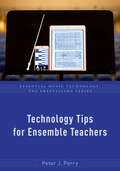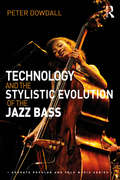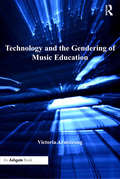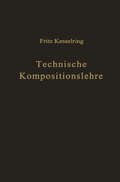- Table View
- List View
Tenement Kid: Rough Trade Book of the Year
by Bobby GillespieTenement Kid is Bobby Gillespie's story up to the recording and release of the album that has been credited with 'starting the 90's', Screamadelica.Born into a working class Glaswegian family in the summer of 1961, Bobby's memoirs begin in the district of Springburn, soon to be evacuated in Edward Heath's brutal slum clearances. Leaving school at 16 and going to work as a printers' apprentice, Bobby's rock n roll epiphany arrives like a bolt of lightning shining from Phil Lynott's mirrored pickguard at his first gig at the Apollo in Glasgow. Filled with 'the holy spirit of rock n roll' his destiny is sealed with the arrival of the Sex Pistols and punk rock which to Bobby, represents an iconoclastic vision of class rebellion and would ultimately lead to him becoming an artist initially in the Jesus and Mary Chain then in Primal Scream.Structured in four parts, Tenement Kid builds like a breakbeat crescendo to the final quarter of the book, the Summer of Love, Boys Own parties, and the fateful meeting with Andrew Weatherall in an East Sussex field. As the '80s bleed into the '90s and a new kind of electronic soul music starts to pulse through the nation's consciousness, Primal Scream become the most innovative British band of the new decade, representing a new psychedelic vanguard taking shape at Creation Records.Ending with the release of Screamadelica and the tour that followed in the autumn, Tenement Kid is a book filled with the joy and wonder of a rock n roll apostle who would radically reshape the future sounds of fin de siècle British pop. Published thirty years after the release of their masterpiece, Bobby Gillespie's memoir cuts a righteous path through a decade lost to Thatcherism and saved by acid house.
Ten Years in an Open Necked Shirt
by John Cooper Clarke‘Yes, it was be there or be square as, clad in the slum chic of the hipster, he issued the slang anthems of the zip age in the desperate esperanto of the bop. John Cooper Clarke: the name behind the hairstyle, the words walk in the grooves hacking through the hi-fi paradise of true luxury’Punk. Poet. Pioneer. The Bard of Salford’s seminal collection is as scabrous, wry & vivid now as it was when first published over 25 years ago. ‘The godfather of British performance poetry’Daily Telegraph
Ten Thousand Apologies: Fat White Family and the Miracle of Failure
by Adelle Stripe Lias SaoudiFrom the mountains of Algeria to the squats of South London via sectarian Northern Ireland, Ten Thousand Apologies is the sordid and thrilling story of the country's most notorious cult band, Fat White Family. Loved and loathed in equal measure since their formation in 2011, the relentlessly provocative, stunningly dysfunctional "drug band with a rock problem" have dedicated themselves to constant chaos and total creative freedom at all costs.Like a tragicomic penny dreadful dreamed up by a mutant hybrid of Jean Genet, the Dadaists and Mark E. Smith, the Fat Whites' story is a frequently jaw-dropping epic of creative insurrection, narcotic excess, mental illness, wanderlust, self-sabotage, fractured masculinity, and the ruthless pursuit of absolute art.Co-written with lucidity and humour by singer Lias Saoudi and acclaimed author Adelle Stripe, Ten Thousand Apologies is that rare thing: a music book that barely features any music, a biography as literary as any novel, and a confessional that does not seek forgiveness. This is the definitive account of Fat White Family's disgraceful and radiant jihad - a depraved, romantic and furious gesture of refusal to a sanitised era.
'The Temple of Music' by Robert Fludd (Music Theory in Britain, 1500–1700: Critical Editions)
by Peter HaugeRobert Fludd (1574-1637) is well known among historians of science and philosophy for his intriguing work, The Metaphysical, Physical and Technical History of both Major and Minor Worlds, in which music plays an important role in his system of neoplatonic correspondences: the harmony of the universe (macrocosm) as well as the harmony of man (microcosm). 'The Temple of Music' (1617-18) is one section of this work, and deals with music theory, practice and organology. Many musicologists today have dismissed his musical ideas as conservative and outmoded or mainly based on fantasy; only the chapters on instruments have received some attention. However, reading Fludd's work on music theory and practice in the context of his own time and comparing it with other contemporary treatises, it is apparent that much of it contains highly original ideas and cannot be considered old fashioned or conservative. It is evident that Fludd's music philosophy influenced and provoked contemporary natural philosophers such as Marin Mersenne and Johannes Kepler. Less well known is the fact that Fludd's music theory reveals aspects of the development of new concepts that appear to reflect contemporary writers on music such as John Coprario and Thomas Campion. Before now, 'The Temple of Music' has not been easily accessible or available, and the fact that Fludd wrote in Latin has also been prohibitive. This critical edition provides the original Latin, an English translation and essential illustrations. The book will therefore be a useful tool for understanding the position of English music theory around 1600.
'The Temple of Music' by Robert Fludd (Music Theory in Britain, 1500–1700: Critical Editions)
by Peter HaugeRobert Fludd (1574-1637) is well known among historians of science and philosophy for his intriguing work, The Metaphysical, Physical and Technical History of both Major and Minor Worlds, in which music plays an important role in his system of neoplatonic correspondences: the harmony of the universe (macrocosm) as well as the harmony of man (microcosm). 'The Temple of Music' (1617-18) is one section of this work, and deals with music theory, practice and organology. Many musicologists today have dismissed his musical ideas as conservative and outmoded or mainly based on fantasy; only the chapters on instruments have received some attention. However, reading Fludd's work on music theory and practice in the context of his own time and comparing it with other contemporary treatises, it is apparent that much of it contains highly original ideas and cannot be considered old fashioned or conservative. It is evident that Fludd's music philosophy influenced and provoked contemporary natural philosophers such as Marin Mersenne and Johannes Kepler. Less well known is the fact that Fludd's music theory reveals aspects of the development of new concepts that appear to reflect contemporary writers on music such as John Coprario and Thomas Campion. Before now, 'The Temple of Music' has not been easily accessible or available, and the fact that Fludd wrote in Latin has also been prohibitive. This critical edition provides the original Latin, an English translation and essential illustrations. The book will therefore be a useful tool for understanding the position of English music theory around 1600.
The Temple of Fame and Friendship: Portraits, Music, and History in the C. P. E. Bach Circle
by Annette RichardsThis book examines the renowned portrait collection assembled by C. P. E. Bach, J. S. Bach’s second son. One of the most celebrated German composers of the eighteenth century, C. P. E. Bach spent decades assembling an extensive portrait collection of some four hundred music-related items—from oil paintings to engraved prints. The collection was dispersed after Bach’s death in 1788, but with Annette Richards’s painstaking reconstruction, the portraits once again present a vivid panorama of music history and culture, reanimating the sensibility and humor of Bach’s time. Far more than a mere multitude of faces, Richards argues, the collection was a major part of the composer’s work that sought to establish music as an object of aesthetic, philosophical, and historical study. The Temple of Fame and Friendship brings C. P. E. Bach’s collection to life, giving readers a sense of what it was like for visitors to tour the portrait gallery and experience music in rooms thick with the faces of friends, colleagues, and forebears. She uses the collection to analyze the “portraitive” aspect of Bach’s music, engaging with the influential theories of Swiss physiognomist Johann Caspar Lavater. She also explores the collection as a mode of cultivating and preserving friendship, connecting this to the culture of remembrance that resonates in Bach’s domestic music. Richards shows how the new music historiography of the late eighteenth century, rich in anecdote, memoir, and verbal portrait, was deeply indebted to portrait collecting and its negotiation between presence and detachment, fact and feeling.
Telling Stories
by Tim BurgessTelling Stories by Tim Burgess of The Charlatans is one of the decade's most revealing rock books'Clear, honest. An unusually frank and well-written rock memoir' The TimesThe Charlatans. Madchester. Britpop. Taking on the world. Here are the highs, the lows, the joys, the agonies, and the stories of what it's like to be in a rock band, as told by front man and survivor, Tim Burgess. 'Like the best bits of every cautionary rock star tale . . . there is armed robbery and smuggling. There's serious fraud. There are near and actual death experiences, divorce, industrial cocaine consumption and magnificent cameos from Madonna, Alan McGee, Ronnie Wood, Joe Strummer, LA drug dealer Harry The Dog, and Joaquin Phoenix. A minor classic' QFor readers who enjoyed Life by Keith Richards and Bit of a Blur by Alex James, Telling Stories is one of the finest music books of recent times. It's a story of achievement and survival, from London to LA. 'A vivid read' Independent on Sunday'The Charlatans' frontman recalls the heyday of Britpop and Madchester with endearing exuberance. He's unflinchingly honest about the bad times but also peppers his story with anecdotal nuggets about the pitfalls of rock 'n' roll excess' Metro'Burgess keeps a level head, a sharp eye and a nice turn of phrase' Independent'Written with the stylish flow of a novel - light and dark, hilarious and melancholic' Emma Forrest'For a man whose behaviour borders on the suicidal, Timothy Burgess, the people's friend, is what you call a life enthusiast. He is also mad. It's a much-abused word, mad . . . but he really is proper coo-ee clouds pan-dimensional mad mad' Syliva Patteerson, SkyTim Burgess was born in Salford but grew up in a village near Northwich, Cheshire. Leaving school at 16 to work at ICI, his real love was music and soon afterwards he was invited to join new band The Charlatans. For twelve years Burgess lived in Los Angeles but he has recently returned to the UK.
Telling Stories: Photographs of The Fall
by Kevin Cummins***'No one has captured the look of alternative UK music over the past half a century more tellingly than Kevin Cummins.' - Simon Armitage'Kevin Cummins is a true master in being able to capture the essence of music, the soul of the band. Whatever he does however he does it is a mystery to me but it's pure genius.' - Rankin'Kevin has the uncanny ability of capturing the inner mood of musicians. Be it the dynamics within a pensive Joy Division, or the sense surrounding the fledgeling Fall that something special was around the corner for us all. Kevin's book is nothing less than a remarkable document of a bewildering and defiant anti-fashion movement born in Prestwich, north Manchester in the grimy mid-70s.' - Marc Riley'Capturing forty years of the band's career via his archive, the legendary photographer (whose recent book, Juvenes, documented the story of Joy Division) gives his take on the phenomenon of The Fall and the late, great Mark E. Smith.' - Vive le Rock Contains never-before-seen images.Foreword by Simon Armitage, Poet Laureate. From chaotic early gigs to their final years, NME photographer Kevin Cummins provides a definitive, unique perspective on cult favourites The Fall. In this stunning visual history spanning four decades, discover how and why they emerged as one of the most innovative, boundary-breaking bands in modern music.With a foreword by Poet Laureate and Fall fan Simon Armitage and an interview with Eleni Poulou, as well as never-before-seen images from Cummins' archive, this is the ultimate visual companion to The Fall.
Telling It Like It Is
by Joe Darensbourg Peter VacherThe autobiography of one of the foremost jazz clarinetists who is well known for his recordings with Edward 'Kid' Ory and the Louis Armstrong All Stars. Darensbourg was born in Baton Rouge, LA, in 1906 and heard many early New Orleans jazz bands as a young boy. For most of his life he lived on the West Coast and the book is a first-rate reference source for students of jazz and popular music in the urban centres of Seattle and Los Angeles.
Tell Me Why: The Beatles: Album By Album, Song By Song, The Sixties And After
by Tim RileyA unique combination of musical analysis and cultural history, Tell Me Why stands alone among Beatles books with its single-minded focus on the most important aspect of the band: its music. Riley offers a new, deeper understanding of the Beatles by closely considering each song and album they recorded in an exploration as rigorous as it is soulful. He tirelessly sifts through the Beatles discography, making clear that the legendary four were more than mere teen idols: They were brilliant innovators who mastered an extremely detailed art. Since the first publication of Tell Me Why in 1988, much new primary source material has appeared -- Paul McCartney's authorized biography, the Anthology CDs and videos, the complete Parlophone-sequenced albums on CD, the Live at the BBCsessions, and the global smash 1. Riley incorporates all the new material in an update that makes this a crucial book for Beatles fans.
Tell Me Why: The Beatles: Album By Album, Song By Song, The Sixties And After
by Tim RileyA unique combination of musical analysis and cultural history, Tell Me Why stands alone among Beatles books with its single-minded focus on the most important aspect of the band: its music. Riley offers a new, deeper understanding of the Beatles by closely considering each song and album they recorded in an exploration as rigorous as it is soulful. He tirelessly sifts through the Beatles discography, making clear that the legendary four were more than mere teen idols: They were brilliant innovators who mastered an extremely detailed art. Since the first publication of Tell Me Why in 1988, much new primary source material has appeared-Paul McCartney's authorized biography, the Anthology CDs and videos, the complete Parlophone-sequenced albums on CD, the Live at the BBCsessions, and the global smash 1. Riley incorporates all the new material in an update that makes this a crucial book for Beatles fans.
Tell Her She's Dreamin': A memoir for ambitious girls
by Simone Amelia JordanThis book is a love letter to women longing to break free of the boxes their postcode, skin colour, gender and bank balance put them in. Its title is a rebel yell to ambitious women and girls hungry for more. Growing up on the whitewashed Central Coast in the 1980s and attending an elite school as a scholarship student from the wrong side of the tracks, Lebanese-Cypriot Simone Amelia Jordan felt like an outcast among her peers for years. Her lifeline was hip-hop, then in its golden age. From girlhood, Simone recognised the art form's pro-Black consciousness, and the rappers' resonant words inspired her to embrace her own identity and back herself. From founding Australia's most successful hip-hop and R&B publication to moving to New York City and interviewing the biggest stars of the time as the editor of the world's most beloved rap magazine; falling in love and getting her heart broken; grappling with her family ties to culture; and struggling through illness and sexual grooming, Simone's inspiring story is about defying the odds to reach for your dreams. But it is also about figuring out those dreams can change as you do.Tell Her She's Dreamin' is a deeply personal story of family, culture and music that disrupts the long-held view that women, and racially diverse women especially, are limited in their power as bold, playful explorers. It is a timely manual for those hellbent on going places and an inspiration for anyone who has ever been told they can't. (Spoiler alert: you can!)
Television's Marquee Moon (33 1/3)
by Bryan WatermanA thoroughly researched study of the origins of the New York City punk scene, focusing on Television and their extraordinary debut record.
Television's Marquee Moon (33 1/3)
by Bryan WatermanA thoroughly researched study of the origins of the New York City punk scene, focusing on Television and their extraordinary debut record.
Tele-Improvisation: Intercultural Interaction in the Online Global Music Jam Session (Springer Series on Cultural Computing)
by Roger MillsThis research monograph explores the rapidly expanding field of networked music making and the ways in which musicians of different cultures improvise together online. It draws on extensive research to uncover the creative and cognitive approaches that geographically dispersed musicians develop to interact in displaced tele-improvisatory collaboration. It presents a multimodal analysis of three tele-improvisatory performances that examine how cross-cultural musician’s express and perceive intentionality in these interactions, as well as their experiences of distributed agency and tele-presence.Tele-Improvisation: Intercultural Interaction in the Online Global Music Jam Session will provide essential reading for musician’s, postgraduate students, researchers and educators, working in the areas of telematic performance, musicology, music cognition, intercultural communication, distance collaboration and learning, digital humanities, Computer Supported Cooperative Work and HCI.
Teenage Boys, Musical Identities, and Music Education: An Australian Narrative Inquiry (ISSN)
by Jason GoopyMusic is a powerful process and resource that can shape and support who we are and wish to be. The interaction between musical identities and learning music highlights school music education’s potential contributions and responsibilities, especially in supporting young people’s mental health and well-being. Through the distinctive stories and drawings of Aaron, Blake, Conor, Elijah, Michael, and Tyler, this book reveals the musical identities of teenage boys in their final year of study at an Australian boys’ school.This text serves as an interface between music, education, and psychology using narrative inquiry. Previous research in music education often seeks to generalise boys, whereas this study recognises and celebrates the diverse individual voices of students where music plays a significant role in their lives. Adolescent boys’ musical identities are examined using the theories of identity work and possible selves, and their underlying music values and uses are considered important guiding principles and motivating goals in their identity construction. A teaching and learning framework to shape and support multiple musical identities in senior secondary class music is presented.The relatable and personal stories in this book will appeal to a broad readership, including music teachers, teacher educators, researchers, and readers interested in the role of music in our lives. Creative and arts-based research methods, including narrative inquiry and innovative draw and tell interviews, will be particularly relevant for research method courses and postgraduate research students.
Teenage Boys, Musical Identities, and Music Education: An Australian Narrative Inquiry (ISSN)
by Jason GoopyMusic is a powerful process and resource that can shape and support who we are and wish to be. The interaction between musical identities and learning music highlights school music education’s potential contributions and responsibilities, especially in supporting young people’s mental health and well-being. Through the distinctive stories and drawings of Aaron, Blake, Conor, Elijah, Michael, and Tyler, this book reveals the musical identities of teenage boys in their final year of study at an Australian boys’ school.This text serves as an interface between music, education, and psychology using narrative inquiry. Previous research in music education often seeks to generalise boys, whereas this study recognises and celebrates the diverse individual voices of students where music plays a significant role in their lives. Adolescent boys’ musical identities are examined using the theories of identity work and possible selves, and their underlying music values and uses are considered important guiding principles and motivating goals in their identity construction. A teaching and learning framework to shape and support multiple musical identities in senior secondary class music is presented.The relatable and personal stories in this book will appeal to a broad readership, including music teachers, teacher educators, researchers, and readers interested in the role of music in our lives. Creative and arts-based research methods, including narrative inquiry and innovative draw and tell interviews, will be particularly relevant for research method courses and postgraduate research students.
Technology Tips for Ensemble Teachers (Essential Music Technology:The Prestissimo Series)
by Peter J. PerryWritten by veteran music educator Peter J. Perry, Technology Tips for Ensemble Teachers presents a collection of practical tips to help today's school music ensemble director incorporate and implement technology in all aspects of large ensemble instruction. This go-to guide offers specific methods for the use of technology in ensemble instruction, identifies applicable technologies, and details proven ways to successfully use those technologies in instruction. Tips throughout the book vary in type and complexity, allowing directors of all technical abilities to use the book effectively to meet the unique needs of their ensembles and students. They also offer content-specific examples for technologies in band, orchestra, jazz ensemble, and chorus instruction, as well as emerging ensemble settings such as percussion ensembles, guitar ensembles, rock bands, a capella groups, and iPad ensembles. With a special focus on current technologies including mobile devices, Technology Tips for Ensemble Teachers is a timely and useful resource for directors as students and classrooms become ever more technology-oriented.
Technology for Unleashing Creativity: Practical Tips and Tools for Music Educators (Essential Music Technology: The Prestissimo Series)
by Steve GiddingsTraditional music education centered around the ensemble classroom has often privileged reading music and instrumental technique over creative skills such as composition, improvisation, and learning by ear. As the technological landscape of students' everyday lives rapidly shifts, what schools teach rarely aligns with students' more creative day-to-day lives outside of the classroom. While administrators and state education standards often encourage incorporating creative technologies into the music curriculum, many music teachers lack the training to successfully utilize these tools and platforms. In Technology for Unleashing Creativity, author Steve Giddings provides a practical and easily accessible resource for in-service and pre-service K-12 teachers looking to make better use of technology in their teaching and help heighten students' creativity. One of few authors to tackle both issues simultaneously, Giddings offers a guide for inspiring creativity in students through tools like YouTube learning, notation technology, DAWs, electronic instruments, online pedagogical platforms, and more. A technology-driven approach to music education has never been timelier. COVID-19 has significantly disrupted the business-as-usual of educational institutions, and music educators especially have adapted to teaching remotely. Via practical tips, visual diagrams, and lesson plan ideas, Technology for Unleashing Creativity walks music teachers through the core aspects of using technology in their classrooms--in-person and remote--offering a definitive guide to creativity and technology in K-12 music education.
Technology for Unleashing Creativity: Practical Tips and Tools for Music Educators (Essential Music Technology: The Prestissimo Series)
by Steve GiddingsTraditional music education centered around the ensemble classroom has often privileged reading music and instrumental technique over creative skills such as composition, improvisation, and learning by ear. As the technological landscape of students' everyday lives rapidly shifts, what schools teach rarely aligns with students' more creative day-to-day lives outside of the classroom. While administrators and state education standards often encourage incorporating creative technologies into the music curriculum, many music teachers lack the training to successfully utilize these tools and platforms. In Technology for Unleashing Creativity, author Steve Giddings provides a practical and easily accessible resource for in-service and pre-service K-12 teachers looking to make better use of technology in their teaching and help heighten students' creativity. One of few authors to tackle both issues simultaneously, Giddings offers a guide for inspiring creativity in students through tools like YouTube learning, notation technology, DAWs, electronic instruments, online pedagogical platforms, and more. A technology-driven approach to music education has never been timelier. COVID-19 has significantly disrupted the business-as-usual of educational institutions, and music educators especially have adapted to teaching remotely. Via practical tips, visual diagrams, and lesson plan ideas, Technology for Unleashing Creativity walks music teachers through the core aspects of using technology in their classrooms--in-person and remote--offering a definitive guide to creativity and technology in K-12 music education.
Technology and the Stylistic Evolution of the Jazz Bass (Ashgate Popular and Folk Music Series)
by Peter DowdallTechnology and the Stylistic Evolution of the Jazz Bass traces the stylistic evolution of jazz from the bass player’s perspective. Historical works to date have tended to pursue a ‘top down’ reading, one that emphasizes the influence of the treble instruments on the melodic and harmonic trajectory of jazz. This book augments that reading by examining the music’s development from the bottom up. It re-contextualizes the bass and its role in the evolution of jazz (and by extension popular music in general) by situating it alongside emerging music technologies. The bass and its technological mediation are shown to have driven changes in jazz language and musical style, and even transformed creative hierarchies in ways that have been largely overlooked. The book’s narrative is also informed by investigations into more commercial musical styles such as blues and rock, in order to assess how, and the degree to which, technological advances first deployed in these areas gradually became incorporated into general jazz praxis. Technology and the Jazz Bass reconciles technology more thoroughly into jazz historiography by detailing and evaluating those that are intrinsic to the instrument (including its eventual electrification) and those extrinsic to it (most notably evolving recording and digital technologies). The author illustrates how the implementation of these technologies has transformed the role of the bass in jazz, and with that, jazz music as an art form.
Technology and the Stylistic Evolution of the Jazz Bass (Ashgate Popular and Folk Music Series)
by Peter DowdallTechnology and the Stylistic Evolution of the Jazz Bass traces the stylistic evolution of jazz from the bass player’s perspective. Historical works to date have tended to pursue a ‘top down’ reading, one that emphasizes the influence of the treble instruments on the melodic and harmonic trajectory of jazz. This book augments that reading by examining the music’s development from the bottom up. It re-contextualizes the bass and its role in the evolution of jazz (and by extension popular music in general) by situating it alongside emerging music technologies. The bass and its technological mediation are shown to have driven changes in jazz language and musical style, and even transformed creative hierarchies in ways that have been largely overlooked. The book’s narrative is also informed by investigations into more commercial musical styles such as blues and rock, in order to assess how, and the degree to which, technological advances first deployed in these areas gradually became incorporated into general jazz praxis. Technology and the Jazz Bass reconciles technology more thoroughly into jazz historiography by detailing and evaluating those that are intrinsic to the instrument (including its eventual electrification) and those extrinsic to it (most notably evolving recording and digital technologies). The author illustrates how the implementation of these technologies has transformed the role of the bass in jazz, and with that, jazz music as an art form.
Technology and the Gendering of Music Education
by Victoria ArmstrongCritical of technologically determinist assumptions underpinning current educational policy, Victoria Armstrong argues that this growing technicism has grave implications for the music classroom where composition is often synonymous with the music technology suite. The use of computers and associated compositional software in music education is frequently decontextualized from cultural and social relationships, thereby ignoring the fact that new technologies are used and developed within existing social spaces that are always already delineated along gender lines. Armstrong suggests these gender-technology relations have a profound effect on the ways adolescents compose music as well as how gendered identities in the technologized music classroom are constructed. Drawing together perspectives from the sociology of science and technology studies (STS) and the sociology of music, Armstrong examines the gendered processes and practices that contribute to how students learn about technology, the repertoire of teacher and student talk, its effect on student confidence and the issue of male control of technological knowledge. Even though girls and female teachers have technological knowledge and skill, the continuing material and symbolic associations of technology with men and masculinity contribute to the perception of women as less able and less interested in all things technological. In light of the fact that music technology is now central to many music-making practices across all sectors of education from primary, secondary through to higher education, this book provides a timely critical analysis that powerfully demonstrates why the relationship between gender and music technology should remain an important empirical consideration.
Technology and the Gendering of Music Education
by Victoria ArmstrongCritical of technologically determinist assumptions underpinning current educational policy, Victoria Armstrong argues that this growing technicism has grave implications for the music classroom where composition is often synonymous with the music technology suite. The use of computers and associated compositional software in music education is frequently decontextualized from cultural and social relationships, thereby ignoring the fact that new technologies are used and developed within existing social spaces that are always already delineated along gender lines. Armstrong suggests these gender-technology relations have a profound effect on the ways adolescents compose music as well as how gendered identities in the technologized music classroom are constructed. Drawing together perspectives from the sociology of science and technology studies (STS) and the sociology of music, Armstrong examines the gendered processes and practices that contribute to how students learn about technology, the repertoire of teacher and student talk, its effect on student confidence and the issue of male control of technological knowledge. Even though girls and female teachers have technological knowledge and skill, the continuing material and symbolic associations of technology with men and masculinity contribute to the perception of women as less able and less interested in all things technological. In light of the fact that music technology is now central to many music-making practices across all sectors of education from primary, secondary through to higher education, this book provides a timely critical analysis that powerfully demonstrates why the relationship between gender and music technology should remain an important empirical consideration.
